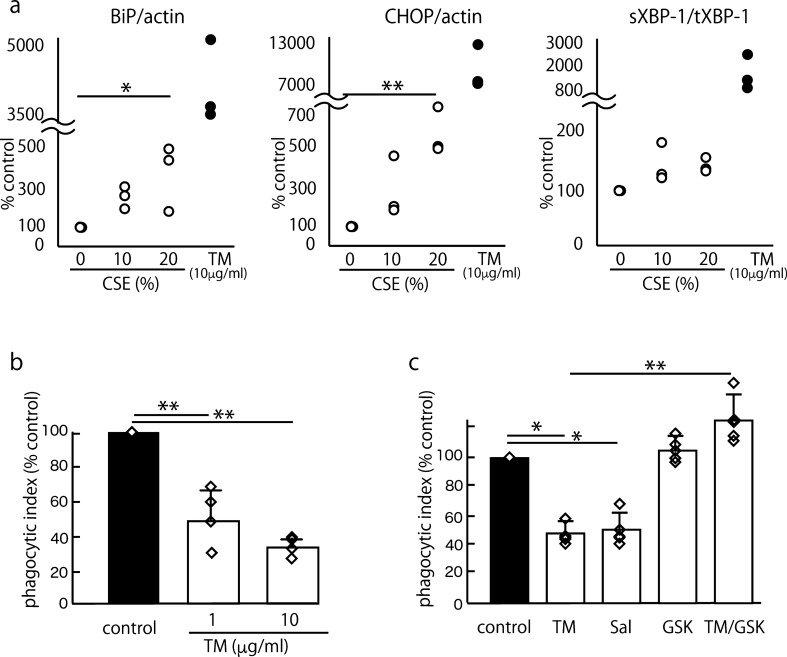Figure 5.
TM suppressed efferocytosis in murine AMs in a PERK-eIF2α pathway-dependent manner. To explore the impact of ER stress on efferocytosis in AMs, we performed a phagocytosis assay using AMs obtained from ICR mice and apoptotic Jurkat cells. The murine AMs were prepared by lung lavage from 8- to 10-week-old female Sic:ICR mice. The mean PI is shown as a percentage of the control ± SEM of three to four or five replicates per group. The means were analyzed using an ANOVA, and when ANOVA indicated significance, Dunnett’s test was used to compare the groups with an internal control (a, b) or Tukey’s test was used to compare two conditions (c) (*p < 0.05, **p < 0.01). (a) We confirmed the effect of TM and CSE on the induction of UPR gene expression in murine AMs. The positive control, i.e., 10 μg/ml TM, strongly induced the expression of the UPR genes BiP (4,254 ± 884% of the control value), CHOP (9,124 ± 3,289% of the control value) and sXBP-1 (1,555 ± 918% of the control value). Furthermore, 20% CSE relatively moderately increased the expression of the UPR genes BiP (374 ± 169% of the control value), CHOP (585 ± 138% of the control value), and sXBP-1 (136 ± 13.6% of the control value) (n = 3). (b) TM (1 and 10 μg/ml) suppressed efferocytosis in murine AMs (control mean PI, 7.85 ± 1.1%) (n = 4). (c) Murine AMs were treated with 100 μM salubrinal and GSK2606414 with or without 10 μg/ml TM. Consistent with our findings, salubrinal significantly suppressed efferocytosis, and GSK2606414 rescued the efferocytosis impaired by TM in murine AMs (control mean PI, 7.77 ± 1.4%) (n = 5).

